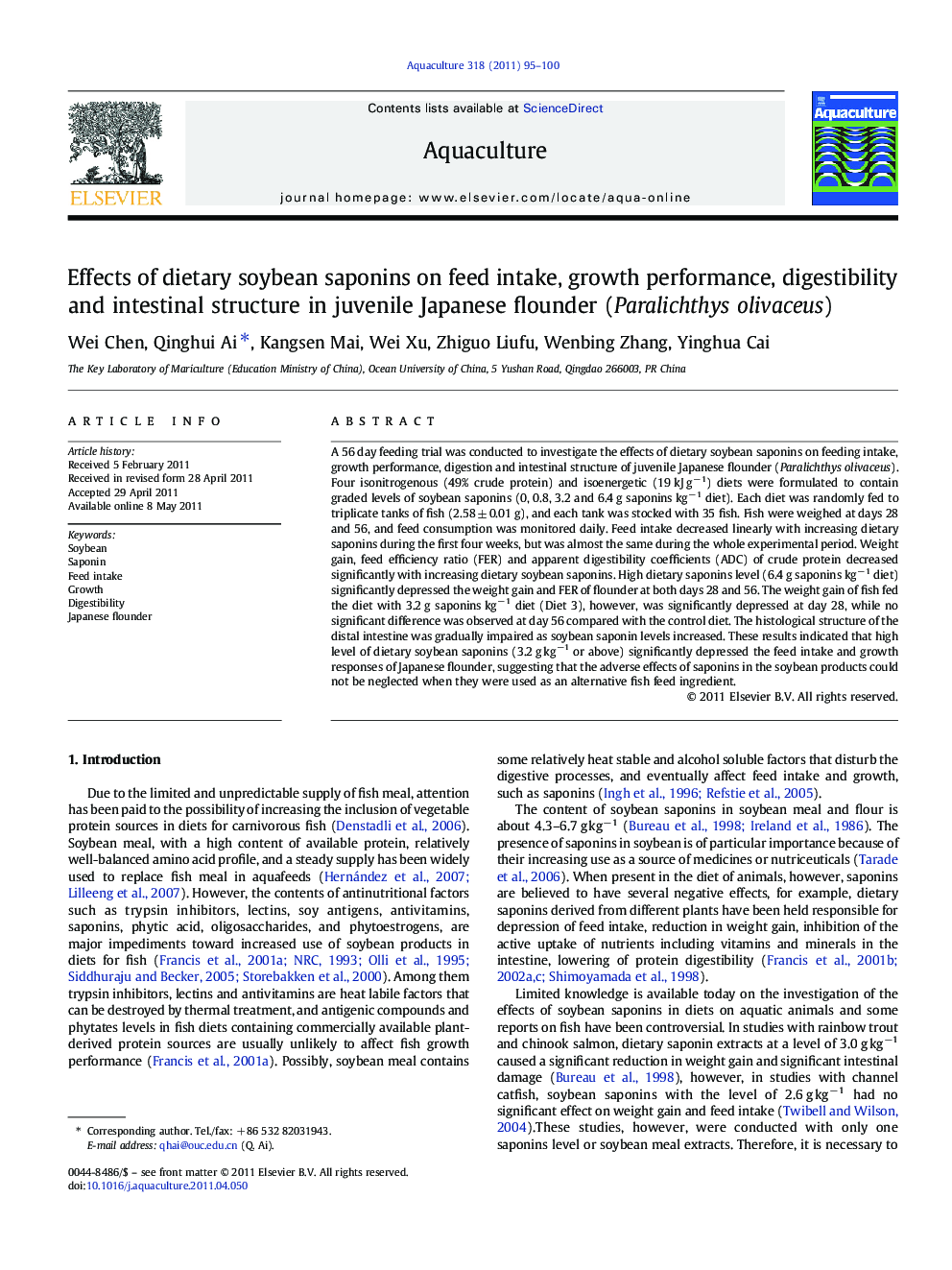| Article ID | Journal | Published Year | Pages | File Type |
|---|---|---|---|---|
| 2422907 | Aquaculture | 2011 | 6 Pages |
A 56 day feeding trial was conducted to investigate the effects of dietary soybean saponins on feeding intake, growth performance, digestion and intestinal structure of juvenile Japanese flounder (Paralichthys olivaceus). Four isonitrogenous (49% crude protein) and isoenergetic (19 kJ g−1) diets were formulated to contain graded levels of soybean saponins (0, 0.8, 3.2 and 6.4 g saponins kg−1 diet). Each diet was randomly fed to triplicate tanks of fish (2.58 ± 0.01 g), and each tank was stocked with 35 fish. Fish were weighed at days 28 and 56, and feed consumption was monitored daily. Feed intake decreased linearly with increasing dietary saponins during the first four weeks, but was almost the same during the whole experimental period. Weight gain, feed efficiency ratio (FER) and apparent digestibility coefficients (ADC) of crude protein decreased significantly with increasing dietary soybean saponins. High dietary saponins level (6.4 g saponins kg−1 diet) significantly depressed the weight gain and FER of flounder at both days 28 and 56. The weight gain of fish fed the diet with 3.2 g saponins kg−1 diet (Diet 3), however, was significantly depressed at day 28, while no significant difference was observed at day 56 compared with the control diet. The histological structure of the distal intestine was gradually impaired as soybean saponin levels increased. These results indicated that high level of dietary soybean saponins (3.2 g kg−1 or above) significantly depressed the feed intake and growth responses of Japanese flounder, suggesting that the adverse effects of saponins in the soybean products could not be neglected when they were used as an alternative fish feed ingredient.
